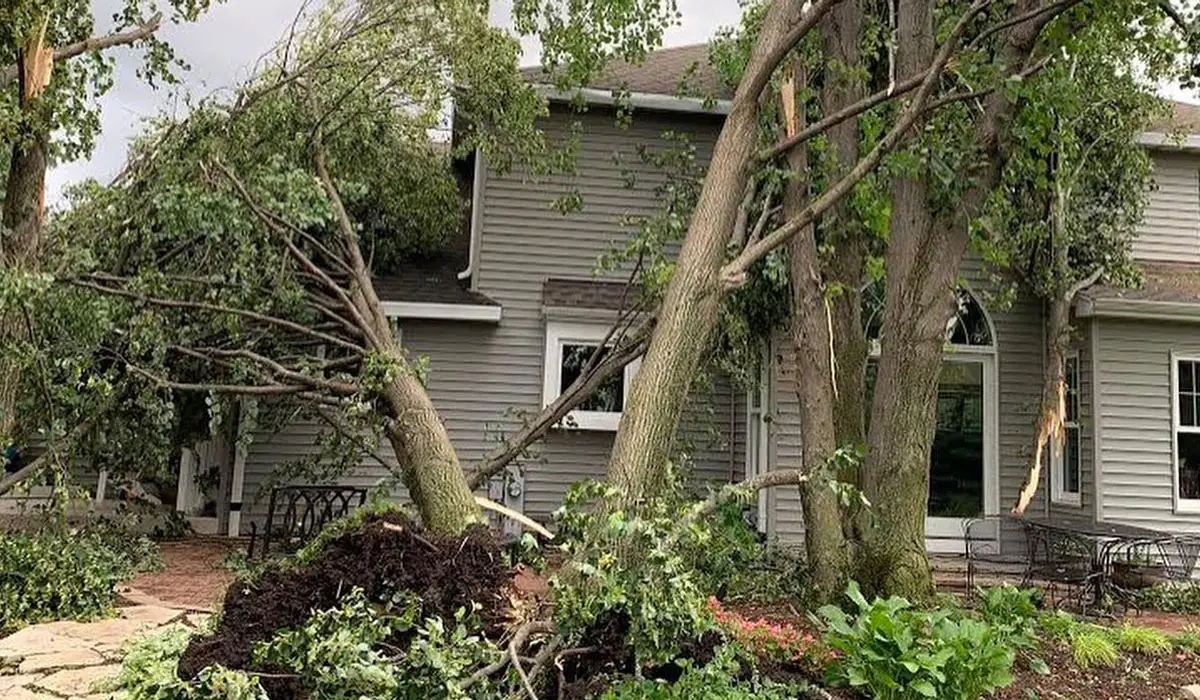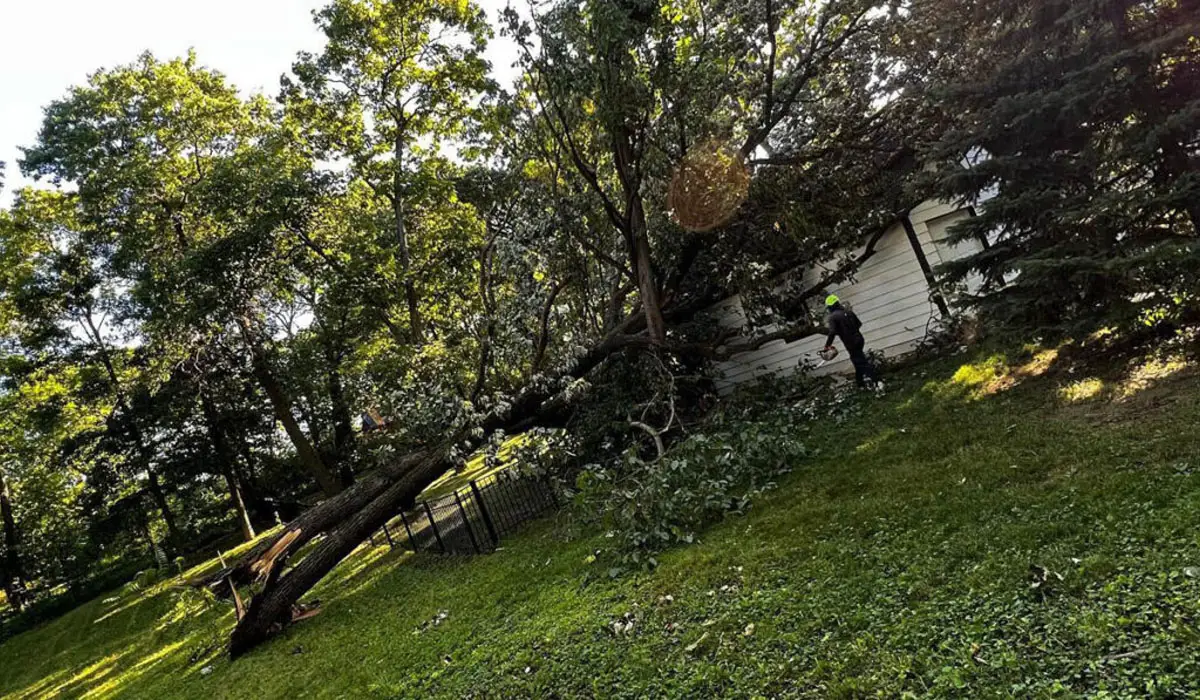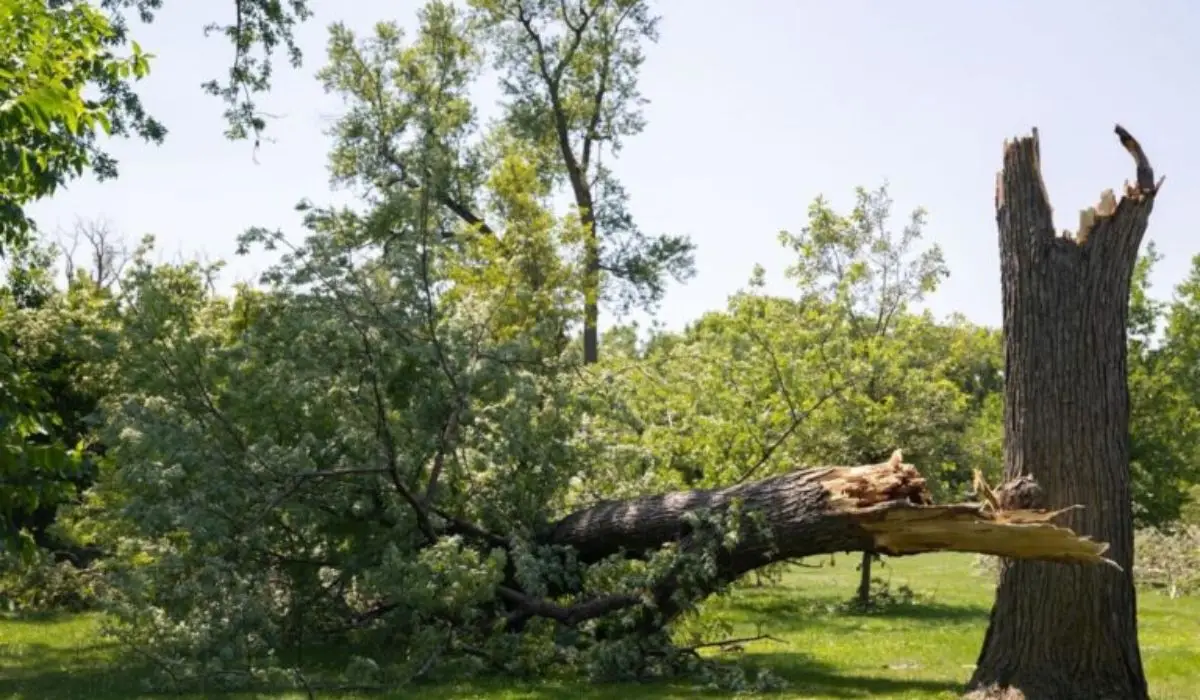
From Garages To Swimming Pools: The Impact Of Fallen Trees On Property
How Fallen Trees Affect The Looks Of My Property?
Fallen leaf trees have devastating consequences on property. It causes damage to other structures. It may also harm people and lead to a decrease in both the aesthetic value and enjoyment of an area. It is important for us to understand the impact of fallen trees on their property. White Oak Tree Care Inc. has been working to enhance the natural beauty of DuPage and Kane County for years. We have been in the industry for nine years now. Our staff goes through comprehensive training. We engage in continuous learning programs.
White Oak Tree Care Inc. has cared for almost every type of tree in the area. We take pride in the work we do. We understand the level of responsibility that comes with it. When it comes to the care of your trees, you can count on us. White Oak Tree Inc. provides a variety of services for your trees. Get a quote today or call us at (630) 520- 2690.
Reasons For Fallen Trees On Property
Trees are a vital part of the environment. They provide oxygen and clean the air. They are also a source of beauty and joy, providing shade and habitat for wildlife. Tree service ranks as one of the most accident-prone industries. It takes the right people with the right skills to do this job.
• Natural Causes
Natural causes, such as wind and decay, are common. They are a major factor in trees falling on properties. Natural causes are one of the main reasons behind fallen trees on properties. They can result in the destruction of buildings and potential harm to people. Thus, it is important for us to understand this cause of property damage. We must take preventative measures.
Trees are susceptible to wind or decay. Severe weather conditions can also make a tree more fragile. Changes in environmental conditions, such as strong winds or droughts, are harmful. These can lead to more fallen tree incidents. An accumulation of snow on branches may cause trees to break. This is due to the extra weight. Erosion can cause it to be unstable and increase its chances of falling over. Old age is another factor. Older trees are more prone to breaking. Their weakened trunks may be unable to withstand certain weather conditions.
• Storms And Extreme Weather Events
This is a significant cause of trees falling on properties. These occurrences can be troublesome. They can also result in the destruction of buildings and potential harm to people. They can cause uprooting and snapping of branches. Sometimes, it causes the toppling of trees too.
High winds during storms can make trees more fragile and susceptible to damage. Freezing temperatures and heavy snowfall can also weaken tree trunks or roots. This increases the risk of fallout. Improper maintenance and care also contribute to the problem. Trees are more prone to breakage or falling due to weakened structural integrity.
Again, old age can be another factor in causing weaker tree trunks. This makes them less able to survive severe weather conditions.

• Poor Maintenance Of Trees On Property
Poor maintenance of trees on properties is a major factor behind fallen oak trees. This can be particularly problematic. The effects may not be immediately noticeable. This may result in the destruction of buildings and potential harm to people. When you do not give enough care to the trees, they overgrow.
Trees become more fragile. This is due to the buildup of deadwood or overgrown branches. Improper pruning techniques can cause the trunks to weaken. Inspect your tree for any signs of disease. You should also check your tree for any pest infestations. It can make trees prone to falling due to weakened structural integrity. All these factors can lead to bigger possibilities of your trees falling.
Impacts Of Fallen Trees On Property
• Potential Damage To Structures Or Other Properties
Fallen trees on properties can cause potential damage to structures or other properties. This is due to the heavy mass of their trunks. Sometimes, because of their limbs. These can crush light materials or even cause structural damage.
Falling debris from a fallen tree has the potential to cause damage, especially to nearby buildings, vehicles, and landscapes. It may also be possible for the roots of the tree to damage underground cables or pipes. This will lead to costly repairs and replacements. Don’t even think about the cost to remove fallen tree.
• Risk To Human Safety
Fallen trees on properties pose a risk to human safety. They can cause physical harm. It depends on the size and location of the fallen tree, and it is possible for it to cause serious injuries. Fatalities are even a possibility. Large trees can also cause significant damage to buildings and vehicles. Landscape features can be affected too.
• Loss Of Amenities/Beautification Of Property
Fallen trees on properties can cause the loss of amenities. It also decreases the beautification of the property. Trees provide shade and ambiance. They can even have an aesthetic appeal when maintained. The loss of a tree on a property can leave it looking exposed and barren. Fallen trees can make certain areas less usable. They may act as blocks to paths or steps that are usually navigable by foot. It is important for property owners to take necessary precautions.

Alleviation Strategies For Preventing Fallen Trees On Property
Alleviation strategies for preventing fallen trees on properties are essential. This ensures the safety of people and the preservation of amenities. These strategies are also important to maintain the beauty of a property.
1. Proper Tree Maintenance And Care
Proper tree maintenance is a necessary step. It is part of ensuring that trees on properties remain safe from falling due to natural causes. Tree maintenance and care can help prevent the fallout of trees from occurring. This includes regular inspections to detect weak branches. Any other signs of decay could compromise the stability of a tree.
Trimming and pruning are also helpful in reducing the size of large branches. This will make them more manageable in heavy winds or storms. You should also consider removing dead wood and decaying trees. They are more susceptible to falling over. Take careful consideration when planting new trees. It is important to select species. Take local climate conditions, soil quality, and sun exposure into consideration. Doing this ensures that trees on the property remain healthy.
Improper trimming and pruning of branches can lead to an increased risk of fallen trees. Preventive measures cannot help you on this one. Trimming and pruning are necessary for the health of a tree. It is important to conduct these activities the right way. This will help maintain the integrity and stability of the tree. If you cut too much off, the risk of your tree toppling over during a natural disaster is likely.
When pruning is not done the proper way, it can open up a path for pests and diseases. This will result in a weak tree. Proper care and caution are a must when trimming or pruning.
2. Removal Of Risks Before To Storms/Extreme Weather Events
Removal of risks before storms and extreme weather events is essential. This reduces the likelihood of fallen trees on properties.
There are many potential risks posed by failing to remove the risk of fallen trees in advance. There is an increased risk of property damage. People on or near the property are at risk of physical injury. Particularly if a falling tree or branch strikes them, there may also be an increased risk of power outages. Fallen trees can interfere with power lines. This would cause widespread disruption. Failing to prepare for the risk of fallen trees leads to costly insurance claims.
There are several strategies that you can use to avoid injury or property damage. Pre-storm inspections and risk assessments, for example. This helps identify potential risks with the existing trees on the property. Remove dead wood and weak branches. They pose a hazard during storms. Trim and prune your branches. It reduces the risk of trees falling in windy conditions. Fortify weak-rooted trees in advance of storms for extra support. Don’t forget to remove fallen tree!
Now, it is up to us. It is important for property owners to take proactive steps. Steps to reduce the potential risks posed by fallen trees. It is important for property owners to take precautionary measures. If you ever find yourself needing fallen leaf tree service, give us a call! For top-notch tree care service, call us at (630) 520- 2690. Our services are available from Monday to Saturday from 8 AM to 5 PM. Get a quote on our services for free. Your surrounding will never be the same with White Oak Tree Care Inc.
Other Services Offered:
Other Articles We’ve Hand-Picked For You:
Frequently Asked Questions
Trees falling on your house can be dangerous. Large trees can pierce roofs, break windows, and cause serious structural damage to your home. Furthermore, trees of any size may bring down power lines with them, creating additional hazards in addition to having a tree fall on your house.
The following indicators indicate potential felling hazards. A split trunk is caused by frost, lightning, or wind. Visible evidence of advanced decay indicates a serious weakness in the tree that could lead to failure. Windfall, scarring, fire, machine, animal damage, heart rot diseases, and all-cause stem damage.
Take a look at the leaves. The leaves of most trees change color and fall off in the fall, but a tree may be in trouble if it loses leaves in the spring or summer or if the leaves do not change color and simply fall off. Tattered leaves that appear to have been chewed are another sign that something is wrong.
There were 92% fractures, 3% dislocations, and 5% non-fracture, non-dislocation injuries among all injuries. Across all tree types, the arm (including the wrist, elbow, and hand) was the most common injury site. Forearm distal radius fractures and ulna fractures were particularly common.
Dead or dying trees, dead parts of live trees, or unstable live trees (due to structural defects or other factors) that are within striking distance of people or property (a target) are examples of tree hazards. Hazardous trees can potentially cause property damage, personal injury, or death if they fail.





 Powered by
Powered by